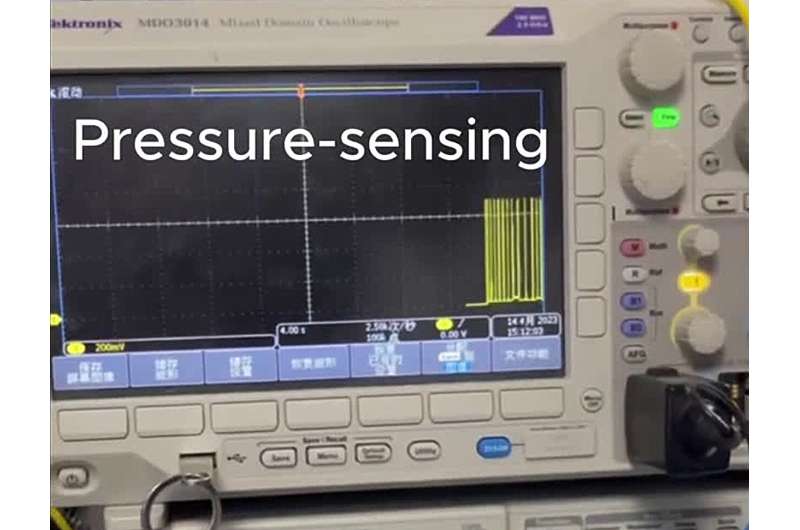A new collaboration between Northwestern University and Georgia Tech has led to the development of an artificial electrochemical neuron that mimics human neural responses, paving the way for smarter robots and advanced sensory systems.

Scientists have long struggled to replicate human perception using organic electronics due to the complexity of sensory neuron networks. However, a groundbreaking study by researchers at Northwestern University and Georgia Tech has brought us closer to this goal. The team has developed a high-performance organic electrochemical neuron (OECN) that operates within the frequency range of human neurons, offering unprecedented advances in artificial sensing.
This neuron forms part of a complete artificial perception system that integrates organic materials with artificial touch receptors and synapses. The system enables real-time tactile signal sensing and processing, mimicking biological touch perception. The research, published in Proceedings of the National Academy of Sciences, could revolutionize intelligent robotics by significantly enhancing sensory capabilities.
“The study marks a major leap in organic electronics and their role in bridging biology and technology,” said Yao Yao, a Northwestern engineering professor and lead author. “We’ve designed an artificial neuron with a reduced footprint and exceptional performance, enabling a neuromorphic tactile perception system that closely replicates real biological processes.”
A key challenge in artificial neural circuits has been their limited firing frequency. According to co-author Tobin J. Marks, a renowned materials scientist at Northwestern, existing artificial circuits function within a narrow range. “Our synthetic neuron achieves an unprecedented firing frequency modulation, offering a range 50 times broader than current organic electrochemical neural circuits,” Marks explained.
Co-corresponding author Antonio Facchetti, a professor at Georgia Tech, emphasized the breakthrough’s significance. “This is the first complete neuromorphic tactile perception system using artificial neurons,” he said. “It can encode tactile stimuli into neuronal signals in real time and translate them into post-synaptic responses.”
The team has taken a crucial step toward replicating human sensory networks by integrating expertise in organic synthesis, electronics, and circuit design. Future advancements will focus on further miniaturization, bringing artificial sensing closer to mimicking the complexity of the human brain’s 86 billion neurons.







